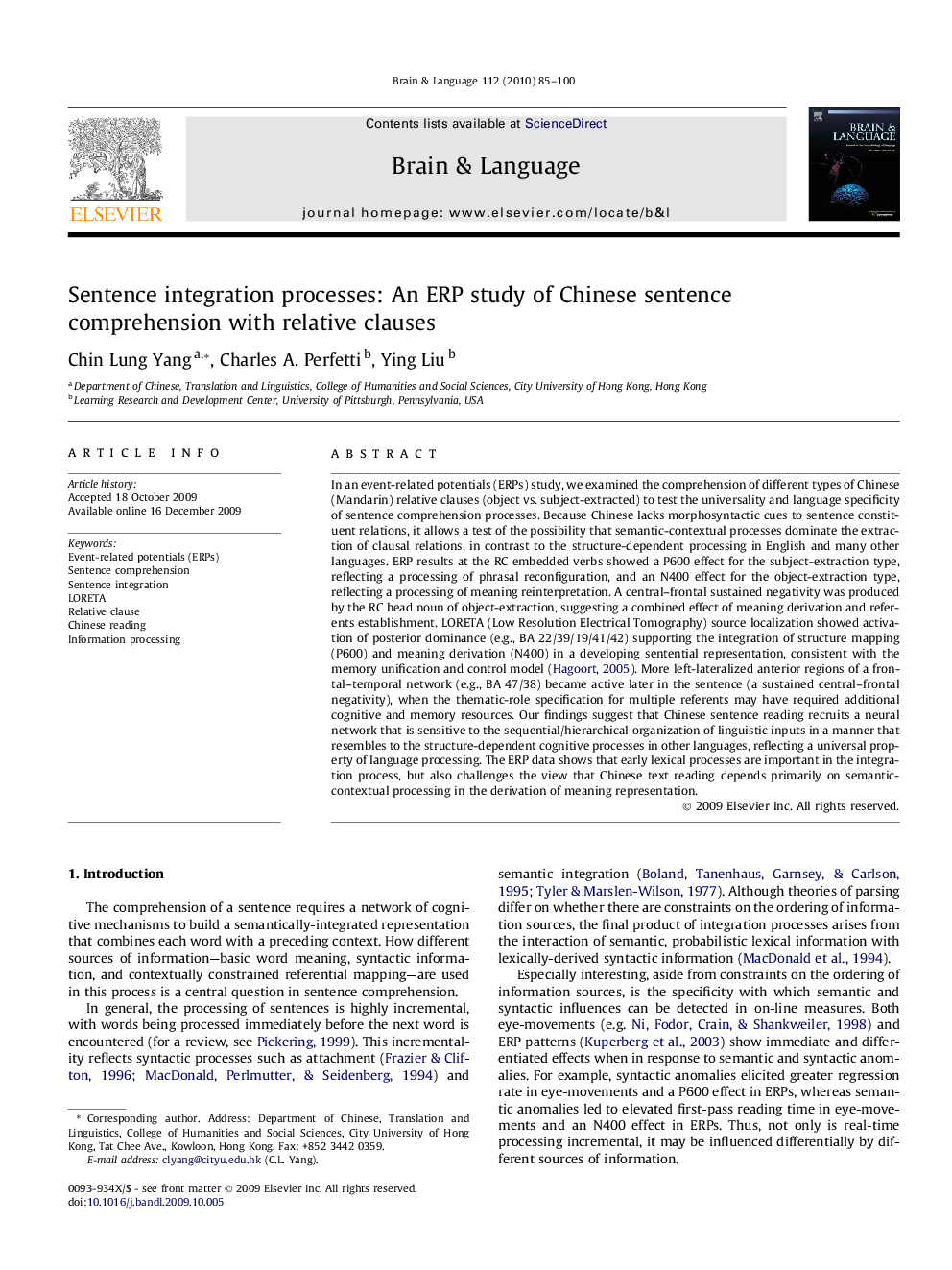| Article ID | Journal | Published Year | Pages | File Type |
|---|---|---|---|---|
| 10456507 | Brain and Language | 2010 | 16 Pages |
Abstract
In an event-related potentials (ERPs) study, we examined the comprehension of different types of Chinese (Mandarin) relative clauses (object vs. subject-extracted) to test the universality and language specificity of sentence comprehension processes. Because Chinese lacks morphosyntactic cues to sentence constituent relations, it allows a test of the possibility that semantic-contextual processes dominate the extraction of clausal relations, in contrast to the structure-dependent processing in English and many other languages. ERP results at the RC embedded verbs showed a P600 effect for the subject-extraction type, reflecting a processing of phrasal reconfiguration, and an N400 effect for the object-extraction type, reflecting a processing of meaning reinterpretation. A central-frontal sustained negativity was produced by the RC head noun of object-extraction, suggesting a combined effect of meaning derivation and referents establishment. LORETA (Low Resolution Electrical Tomography) source localization showed activation of posterior dominance (e.g., BA 22/39/19/41/42) supporting the integration of structure mapping (P600) and meaning derivation (N400) in a developing sentential representation, consistent with the memory unification and control model (Hagoort, 2005). More left-lateralized anterior regions of a frontal-temporal network (e.g., BA 47/38) became active later in the sentence (a sustained central-frontal negativity), when the thematic-role specification for multiple referents may have required additional cognitive and memory resources. Our findings suggest that Chinese sentence reading recruits a neural network that is sensitive to the sequential/hierarchical organization of linguistic inputs in a manner that resembles to the structure-dependent cognitive processes in other languages, reflecting a universal property of language processing. The ERP data shows that early lexical processes are important in the integration process, but also challenges the view that Chinese text reading depends primarily on semantic-contextual processing in the derivation of meaning representation.
Keywords
Related Topics
Life Sciences
Neuroscience
Biological Psychiatry
Authors
Chin Lung Yang, Charles A. Perfetti, Ying Liu,
